 Weird Stuff
Weird Stuff  Weird Stuff
Weird Stuff  History
History 10 Legends Whose Last Moments Undid Their Glory
 Health
Health 10 Futuristic Ideas to Treat Common Medical Problems
 Weird Stuff
Weird Stuff Ten Surreal Attempts to Reverse Baldness
 Facts
Facts 10 U.S. Government Contingency Plans for the Unthinkable
 History
History 10 Weird Distractions from the Great Depression
 Movies and TV
Movies and TV 10 Fictional Kings Who Go from Good to Bad
 Food
Food The Fantastic Chemistry Behind Why 10 Popular Foods Taste So Good
 Technology
Technology 10 Futuristic Fungal Technologies
 History
History 10 Not-so-Spooky Events That Also Happened on October 31
 Weird Stuff
Weird Stuff 10 Things So Rare They’ve Only Been Found Once
 History
History 10 Legends Whose Last Moments Undid Their Glory
 Health
Health 10 Futuristic Ideas to Treat Common Medical Problems
Who's Behind Listverse?

Jamie Frater
Head Editor
Jamie founded Listverse due to an insatiable desire to share fascinating, obscure, and bizarre facts. He has been a guest speaker on numerous national radio and television stations and is a five time published author.
More About Us Weird Stuff
Weird Stuff Ten Surreal Attempts to Reverse Baldness
 Facts
Facts 10 U.S. Government Contingency Plans for the Unthinkable
 History
History 10 Weird Distractions from the Great Depression
 Movies and TV
Movies and TV 10 Fictional Kings Who Go from Good to Bad
 Food
Food The Fantastic Chemistry Behind Why 10 Popular Foods Taste So Good
 Technology
Technology 10 Futuristic Fungal Technologies
 History
History 10 Not-so-Spooky Events That Also Happened on October 31
10 Mystery Monster Finds With Perfectly Rational Explanations
Fringe zoology has long been a popular fixation among paranormal enthusiasts. Throughout history and across the globe, stories and sightings of odd creatures have managed to capture the public interest. The phenomenon is so prevalent that these anomalies were only recently granted their own scientific classification, “cryptid,” in 1983. The idea that monsters exist is definitely fascinating, but when evidence of their presence does turn up, there’s usually little reason to get excited. In these cases, more often than not, looks can be deceiving.
10 De Loys’ Ape
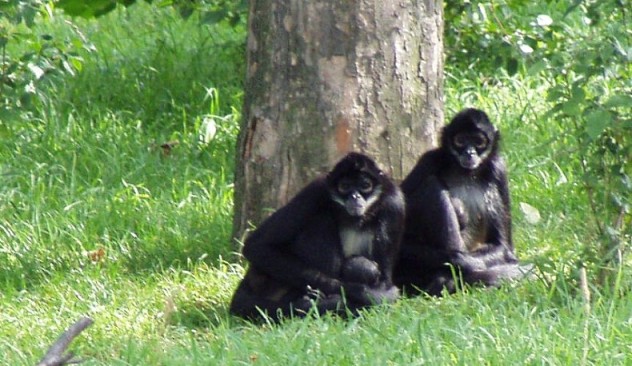
As the story has it, in 1917 Swiss geologist Francois de Loys led an expedition to Venezuela in search of oil. By 1920, he and the surviving members of his party had reached the Rio Tarra, near the Colombian border, where they encountered a pair of strange primates. The monkey-like creatures walked upright, stood at around 140 centimeters (4’ 6”) tall, and lacked tails. They approached aggressively, waving their arms, shouting, and flinging their own excrement, so de Loys shot one of them dead. The other ran off into the jungle. De Loys then posed the dead body for photographs and preserved the creature’s head and hide. Unfortunately, the remains and most of the photographs were reported lost or ruined in a boating mishap later in the expedition. Only one photograph remained.
For nine years, this picture gathered dust in de Loys’ private collection, and likely would have remained there had he not shared it with anthropologist Georges Montandon. Montandon studies surrounded human evolution and race—he believed that the various world populations had descended from the large primates specific to their regions. For example, he theorized that Asians had descended from orangutans. De Loys’ discovery gave Montandon a missing link between the spider monkey and native people of South America. Montandon named it Ameranthropoides loysi, and he and de Loys set about promoting the breakthrough. Problematically, it was an obvious hoax.
While de Loys took his story to the press and was met with great interest, Montandon championed the photo to the scientific community and was quickly called out by scholars who saw the image as nothing more than a common spider monkey without a visible tail. In the picture, there’s nothing definitive to compare the size of the creature to, but the presence of banana plants not native to the area indicated that the entire story was fabricated. Years later, in a letter to a Venezuelan news magazine, physician and politician Dr. Enrique Tejera would assert that he had worked with de Loys during the expedition, knew of the monkey in question, and was sure it was nothing more than de Loys’ pet. It had no tail because it had been amputated for health reasons, and de Loys had simply taken a photo after it died.
9 The Yeti Hand
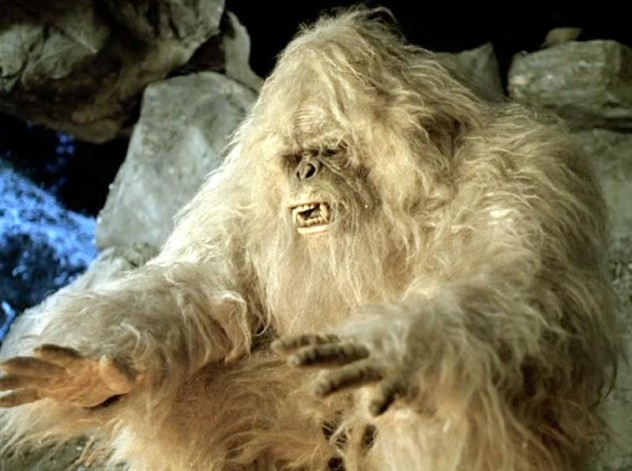
The tale of the Yeti hand of Pangboche Monastery is long, involved, and star-studded. It begins in the early 1950s when a glut of expeditions to conquer Mount Everest quickly gave way to a glut of expeditions to find evidence of the Abominable Snowman.
While the legend of the Yeti is entrenched in Himalayan folklore and the first recorded sighting happened more than 100 years prior, photographs of its tracks captured in 1951 by Everest mountaineer Eric Shipton touched off worldwide fascination. By 1953, Edmund Hillary had reached the mountain’s summit, and with the West now enthralled by both Everest and the Abominable Snowman, the London-based Daily Mail commissioned a large expedition strictly in search of the Yeti. It was this group that first discovered the remains at Pangboche.
The Himalayan village of Pangboche is home to an ancient Buddhist temple, and it was there that the expedition came upon an alleged Yeti’s scalp preserved as a religious relic. They were allowed a cursory inspection, but could extract only scant hairs for further analysis. Team zoologist Charles Stonor was initially convinced of the scalp’s authenticity, but it would be years before the scalp was thoroughly analyzed.
In the meantime, Texas oil tycoon and renowned adventurer Tom Slick organized three high-profile excursions in search of the beast over the latter half of the decade, enlisting the aid of mountaineer and explorer Peter Byrne. Byrne visited the temple in 1958 and found what was said to be a mummified Yeti’s hand as well, but the monks were again reluctant let even a small piece of it leave. Intrigued, Slick sent Byrne back the following year with a dried human hand, hoping he could trade it for that of the Yeti. Byrne reported that he was able to convince the Lamas to allow him to swap one finger of each hand. Slick’s friend and famed actor Jimmy Stewart then smuggled the finger from India to Britain in his wife’s lingerie case. It was received for study by primatologist William Osman Hill, and a sample was sent to anthropologist George Agogino in America. Dr. Hill’s findings were inconclusive—the hand was hominid, but seemed more Neanderthal than human. Decades passed and yet another expedition would reach Pangboche before the next analysis.
In 1960, Edmund Hillary mounted another outing to Nepal, this time on his own fact-finding mission. At Pangboche, he compared the scalp to the hides of three serows and declared it a match. Hillary and his team dismissed the hand on sight as inauthentic, noting it had been wired together—which it had, a year prior, by Byrne. A more thorough study wasn’t done until 1991, when Agogino contributed his sample for a piece by the investigative TV show Unsolved Mysteries. Again the tests proved inconclusive—though the finger appeared human, it was still possible it had belonged to an undiscovered species. Meanwhile, the television exposure resulted in the theft of the scalp and hand from the monastery, leaving only Agogino’s tissue sample as evidence.
But in 2008, Byrne’s Yeti finger was rediscovered among Hill’s collection, which he’d left to the Royal College of Surgeons’ Hunterian Museum in London after his death. In 2011, the BBC learned of its existence, and a sample was taken for a news piece. DNA testing finally and anticlimactically proved it to be human, putting the half-century-old issue to bed.
8 The Cuero Chupacabra
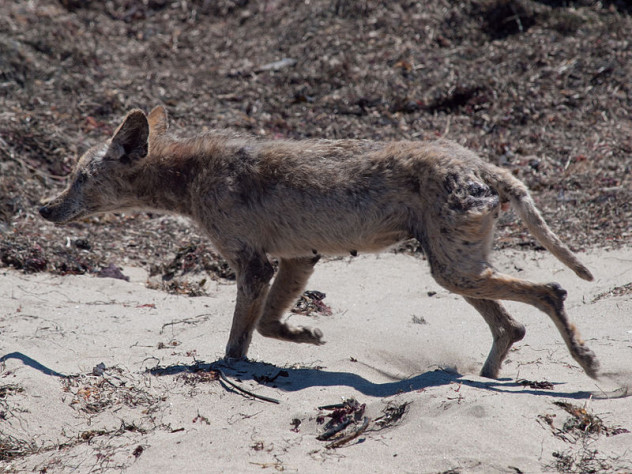
While the United States and Canada can call Bigfoot their primary cryptid, their neighbors in Latin America are more familiar with the infamous, bloodsucking Chupacabra. First reported in Puerto Rico during the mid-1990s, the beast was blamed by locals for a rash of exsanguinated livestock. The first eyewitness account was by Madelyn Tolentino, who described a bipedal creature with giant, alien-like eyes and a spiky back similar to that of a stegosaurus. Her account was sketched by UFOlogist Jorge Martin, and the widely circulated picture provided the first popular documentation of the Chupacabra’s appearance. So, how is it that today many think of the Chupacabra as more zombified dog than reptilian dwarf?
Enter rancher Phylis Canion of Cuero, Texas. Canion claimed that in 2007 her chickens were being mysteriously drained of blood, much like the victims of the legendary beast, and she’d been witnessing strange hairless blue-gray animals lurking about the property. When one of them turned up dead on the road nearby, its appearance was so out of the ordinary that she saved its head for DNA testing and proclaimed to the media it must be the Chupacabra in the flesh. Of course, two separate DNA tests eventually proved that the Cuero Chupacabra was no mythical monster. In reality, the beast was the hybrid offspring of a wolf and a coyote with a severe case of mange. The apparent lack of blood among livestock has been rationalized by researchers as simple coagulation. Nonetheless, the impression on the public remains, and several discoveries of mangy canids have graced news headlines as the elusive Chupacabra in the years since.
7 The Raleigh Sewer Monster
In the summer of 2009, a video entitled “Unknown Lifeform in North Carolina Sewer!” was posted to YouTube by an independent UFO site and quickly picked up by Gawker’s sci-fi blog io9. It showed several odd, membranous, quivering sacs clinging to the innards of a sewer pipe and rapidly went viral, garnering several million hits in just a few days’ time. Despite the questionable source, the purported life form—eerily reminiscent of the classic movie monster The Blob but somewhat more convincing—appeared very real indeed. When the city of Raleigh caught wind of the commotion, they stepped up to confirm the video’s authenticity, and the “sewer monster” made national news.
The video, according to the Public Utilities Department, had been captured by an independent contractor inside a private Raleigh pipeline not owned by the city itself. In fact, they’d been sent the video a month before it turned up online, though they claimed not to know who’d sent it. Furthermore, biologists on staff had confirmed that the “monster” was in actuality a colony of tubifex, or sludge worms, convulsing in reaction to the light of the camera. These organisms, used widely as fish food, are often found and collected near sewer outlets, but are rarely encountered inside the sewer itself. A biology professor from the University of North Carolina believed the sacs were instead a colony of the aquatic invertebrate Bryozoa, but this has since been refuted by an expert on bryozoans at Wright State University and by a Dutch man who shared his own experiment with a cluster of tubifex worms after following the story. Both professors supported the city’s findings. Whether tubifex or bryozoans, it’s probably safe to rule out man-eating protoplasm from outer space.
6 The Cerro Azul Monster

In late 2009, the story of four teenagers and the strange creature they claimed to have killed made the Internet rounds. Surviving reports of the encounter are somewhat conflicting, but they do agree that the boys recount having stoned the thing to death by a creek in the Cerro Azul region of Panama City, Panama. They tossed it in the water and returned later to take photographs of the carcass. These were posted online by a local television program and briefly picked up by American and British presses.
The pictures show a pale, nearly hairless creature with long, skinny arms and a curiously shaped torso. And at least one hooked hand. Suggestions ranged from extraterrestrial to an altogether undiscovered species, but some had already identified the creature for what it was—a decomposing three-toed sloth. When Panamanian officials retrieved the corpse four days after the incident, the resulting biopsy showed this to be exactly the case. The Cerro Azul Monster was found to have been deceased and submerged in water for roughly two days before its discovery, which caused rapid hair loss, a smoothing of the skin, and swelling of the internal organs, all of which contributed to its freakish appearance. An account given by one of the boys further substantiates the findings. He claimed that he felt the creature grabbing his legs while in the creek, so the boys removed it from the water and attacked it. It follows that if the boys weren’t outright lying, they were fooled by the currents of the water.
5 The Omajinaakoos
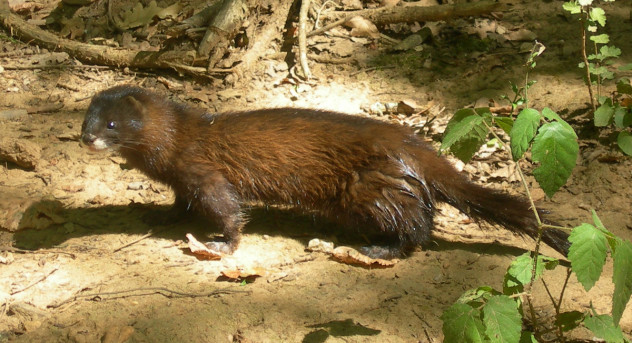
An Internet debate ignited in 2010 when photos of an unidentified creature were posted to the website of Big Trout Lake, a Canadian reservation in northern Ontario. Two nurses had apparently been walking their dog near a causeway on the reservation when it pulled an odd beast from the water with large teeth and a bald white face. While the blogosphere made its own suggestions, community elders speculated it was a beast from tribal lore known as the Omajinaakoos, or “Ugly One” in English, a bad omen.
This was not the case—the Internet has identified the thing as a mink whose face had been cleared of fur due to its being submerged in water after death. Since the carcass was never retrieved, it will never be conclusively proven whether the beast was a legendary harbinger of doom, but the tribe still seems to be doing just fine.
4 The Siberian Extraterrestrial
In April 2011 a video from Irkutsk, Siberia, that showed what appeared to be the mangled corpse of an alien lodged in the snow surfaced on YouTube. As the cameraman studies the strange find, a local provides commentary, explaining how his dog had originally sniffed it out. Small and humanoid, with cavernous eye sockets and wrinkly, pallid skin, it was missing a right leg and appeared to have been involved in some traumatic collision. This led to speculation that the Russian military had botched the covert cleanup of an alien crash site. Irkutsk, apparently, has long been something of a UFO hotspot, and there had been several sightings covered by local media in the days leading up to the discovery. Two days and roughly 1.5 million views later, the video was picked up and dubbed another Internet sensation by major news outlets.
The purported alien could not really be explained away as some sort of desiccated animal, which meant it was either genuine or a hoax. Inevitably, it turned out to be the latter. The video’s creators eventually confessed to local authorities that the “corpse” was fashioned from chicken skin stuffed with bread. As for the strange lights in the sky above Irkutsk, the truth remains shrouded.
3 The East River Monster
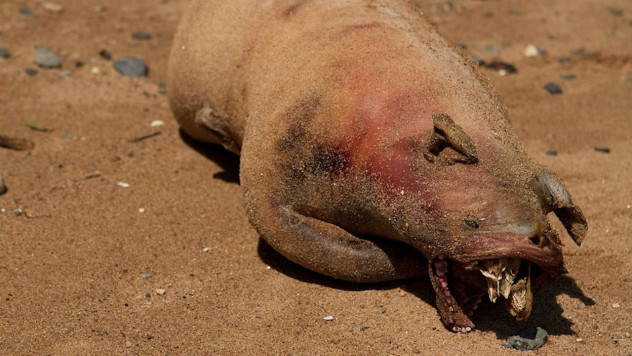
Another curiosity made briefly famous by the Internet, the East River Monster was found in Manhattan under the Brooklyn Bridge. Photographed by a pedestrian in 2012 and posted initially by the New York City–based website Gothamist, its bloated carcass was unrecognizable as any known species.
Speculation briefly ran wild—giant rat or covert lab experiment? The Parks Department offered a statement explaining away the horror as a roasted pig, which it somewhat resembled, but even a passing evaluation of the photo shows the thing’s feet had five claw-like digits, nothing like the cloven, four-toed feet of a pig. A look at the teeth, likewise, reveals nothing remotely porcine. Before long, Gothamist itself was able to clear up the mystery it had unearthed by contacting a Cornell naturalist professor who identified the creature as a small dog that had been decomposing in the water for some time.
2 The Villaricos Sea Monster

In 2013, the bizarre remains of what appeared to be a giant horned sea serpent surfaced on a beach in the Andalusian village of Villaricos. Four meters (13 ft) long and in an advanced state of decomposition, the creature baffled both beachgoers and Spanish authorities. Photos first surfaced in the Spanish press, and before long the blogosphere and local news outlets across the United States suggested it was an oarfish—or possibly a mutant sea dragon. Spanish officials buried the carcass and retained samples for study, but they were at a loss. This mystery was eventually solved by NBC reporter Alan Boyle, who consulted with FSU ichthyologist and shark morphology expert Dean Grubbs. Said Grubbs, “That is definitely a shark skeleton . . . The ‘horns’ are the scapulocoracoids which support the pectoral fins.”
The incident in Villaricos was only one in a long line of “sea monster” discoveries to incur widespread attention before ultimately proving rather ordinary. Just a few months earlier, one such creature inspired guesswork when footage of a giant carcass on a New Zealand beach went viral. The video enjoyed media coverage, but the carcass was identified as nothing stranger than the remains of a orca whale. The previous year, an odd, bone-plated carcass that washed ashore on a South Carolina beach made the news, but was determined to be the remains of an Atlantic sturgeon. From Britain’s Canvey Island Monster (monkfish) to the South African Trunko (whale blubber) to the plesiosaur (basking shark) trawled in by the Japanese fishing boat Zuiyo Maru, sensationalized sea creature discoveries have a storied history, and are not looking likely to subside any time soon.
1 The Huairou Gollum
The “Gollum” of the Huairou hills is one of the most recent examples of mistaken monster identity to incur worldwide coverage and brief speculation—a Google search of “Huairou Gollum” returns pages upon pages of results in several languages. Posted in June 2014 to the popular Chinese social media network Sina Weibo, photos of what appears to be a strange beast with more than a passing resemblance to the famed character from Peter Jackson’s Lord of the Rings trilogy quickly snowballed into a worldwide news item.
The photos, which show a fleshy, hairless creature with large, floppy ears, were reposted more than 30,000 times, drawing tens of thousands of comments and well over a million views on YouTube. In the most circulated shot, the gremlin is staring directly into the camera at relatively close range, affording a clear view of its unusual features. Naturally, a popular assumption was that the photos were a hoax, but this turned out not to be the case.
Huairou, a picturesque district dominated by mountains in the north of Beijing, is a popular traveling destination which includes a portion of the Great Wall. The pictures were taken by a vacationing camper who had wandered off from his group to “have a pee.” Within a day of the initial posting, the story had gone massively viral in China, with one unverifiable commenter claiming to be the very key to the mystery, writing, “Over the weekend I and my friends went to the mountains to take a mini sci-fi film, and when I was having a pee a person popped up and took pictures of me and shot away.” Within another day, Beijing police had taken notice, stating, “This was an actor wearing a costume. He was filming an advertisement.”
The Hauirou County government confirmed the commenter’s story, adding, “The actor was taking a loo break and was still wearing his costume.” This would certainly explain the shot of him stooping in the bushes. Meanwhile, the makers of Guild Wars 2, a popular online role-playing game, offered some slightly different clarification by explaining that the actor had been shooting a Chinese photo ad for the game. He was portraying an Asura, they said, one of the game’s original character races and had been caught taking a drink from a stream. Whether he was relieving himself or refreshing himself remains unclear, but the fact that Guild Wars 2’s Sina Weibo account uploaded pictures of the very same “monster” photographed by the tourist put the issue to rest. While not technically a hoax, the explanation remains perfectly rational after all.
David Underhill is a burgeoning freelance writer and stay-at-home father to a small toddler. He one day aspires to leave his house. In his spare time he enjoys sleeping.








